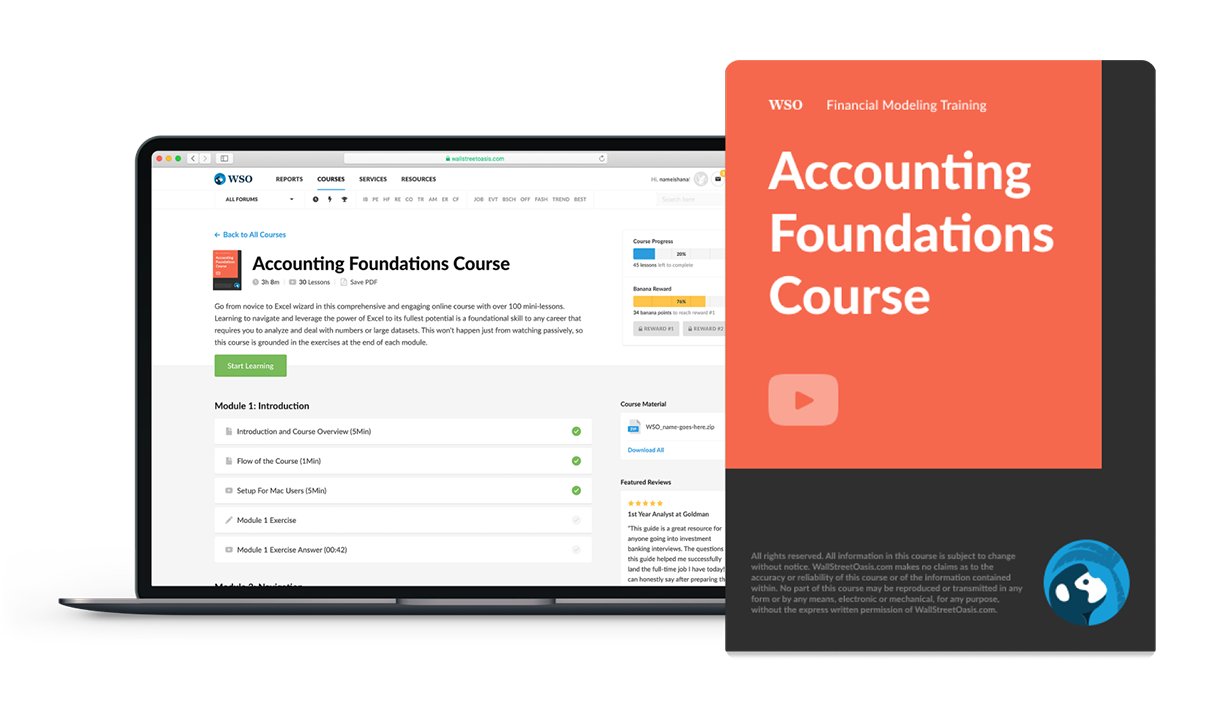
Operating Income
It measures a firm's income before taxes and interest payments are removed from the equation.
Operating income – also known as EBIT (Earnings before Interest and Taxes) – is a measure of a firm's income before taxes and interest payments are taken out. Expenses like the cost of goods sold, depreciation and amortization, and wage expenses are already accounted for in the metric.

One must first find net sales on the income statement to reach operating profit. Then you must subtract the cost of goods sold to get to gross profit. Finally, after subtracting operating expenses from gross profit, you will arrive at your operating income.
This income tells you how much money a company makes after its operational cost is considered. The expenses after these aren't related directly to the business's operations.
EBIT is an important financial metric for financial analysts as it allows an analyst to see how the firm's operations are doing. This can be important when trying to find out how to increase profit. Through EBIT, one can see whether the business's operational or non-operational side needs work.
If a company has many expenses that are more than the gross profit the company generates, the company's financial health will be extremely poor. They will lose money monthly unless they make a lot of money from non-operating revenues on rare occasions.
Shareholders (and other stakeholders) should also be very cautious of a company's EBIT. EBIT is useful because it removes irrelevant information that doesn't involve the company's core operations.

But looking at line items like profit before tax and Net income is still extremely important. Despite a company having a high EBIT, the company could still be losing money and operating at a loss.
After subtracting non-operating expenses from EBIT, you will arrive at EBT or Earning Before Taxes. Then, after subtracting out the tax provision, you will finally arrive at the bottom line – net income.
Why is this income important?
Because EBIT is a figure that accounts for fewer expenses than net income, EBIT will usually be higher than net income except in very rare cases. For example, net income could only be higher if the company made more income from non-operating activities than expenses – which is unusual.

To determine whether a company has a strong EBIT figure compared to other companies in the same industry, the firm will generally look at ratios rather than absolute figures.
Absolute figures can be misleading, especially when businesses are of different sizes. Therefore, a common ratio that firms and financial analysts use when comparing EBITs is EBIT / Revenue.
This will give you the percentage of profitability a firm has after accounting for expenses associated with making and selling the product compared to the revenue they generate.
For example, Company A could have an EBIT of $1 million but have a revenue of $50 million. This means that a substantial amount of its revenues go towards paying expenses.
On the other hand, Company B could have an EBIT of $500k but have a revenue of $2 million. This means that the company doesn't spend much on expenses relative to Company A.
If we used absolute figures, it would look like Company A is financially healthier because it has a larger absolute figure.
When using ratios, we figure out that Company B is substantially healthier because their percentage of EBIT / Revenue is way higher than Company A's. This is why it's important to use ratios when comparing different companies and their EBITs.
Understanding the income
Operating income is solely the income after the business accounts for all costs directly related to its operations. However, as mentioned above, it doesn't account for all the expenses that don't involve the firm's operations.

The goal of any business is to generate the most amount of profit and income as possible. So it's important to understand how companies can increase their EBIT to achieve this goal.
Since EBIT is directly related to the firm's operations, you will have to change aspects of the operations to affect operating profit.
You can take these two actions to increase your operating income:
1. Increase Revenues
You can increase your revenue by selling more products or increasing the price. When you increase your revenue, intuitively, you will have more money left over if your expenses stay relatively constant.

A firm must consider what kind of market it is in before implementing these changes. If the market is too competitive, it could lose money from increasing its prices.
Customers usually buy the cheapest option if two firms sell the same product.
2. Lower Operating Expenses
Although there is no way to eliminate operating costs, there are some measures firms can take to cut down the costs of these expenses.

Lowering these expenses will directly higher your EBIT if you maintain a relatively constant revenue stream. This is because you subtract less from the revenue to get to the operating profit.
Since two expense components contribute to EBIT, you can either attempt to lower COGS, Operating Expenses, or both. For example, firms might lower COGS by negotiating better prices with their suppliers and eliminating unnecessary expenses.
Lowering operating expenses may include cutting wages, letting go of workers, and cutting down expenses that contribute to sales, such as advertising costs.
Increasing sales or cutting costs is essential when trying to make more profit, and that's not different in EBIT's case. Looking at the market and customer base before you make any decisions is important because making decisions too quickly can lead to the business losing money overall.
Different Methods for Calculating Op. Income
Although all methods to calculate operating income are pretty much doing the same thing, it is important to familiarize yourself with the most common ways it's calculated.

The three most common ways to calculate EBIT are the bottom-up, top-down, and cost-accounting approaches.
1. Bottom-up Approach
The bottom-up approach starts with net income rather than starting with net sales. This can be useful if you don't know the revenue figure but know the interest expense, tax expense, and net income.
- First, you'll start by adding the tax expense to net income.
- Add the interest (and other non-operating expenses) to net income.
- After these two steps, you'll arrive at the firm's operating income!
The formula looks like this:
Op. Income = Net Income + Interest Expense + Tax Expense
2. Top-down approach
The top-down approach is probably the more conventional approach as it starts with net sales.

This approach is easier to use when looking at an income statement but can also be useful if you only have net sales, COGS, and operating expenses.
- First, you'll subtract COGS from the net sales. This will give you the gross profit of the firm.
- You'll subtract operating expenses, depreciation, and amortization from the gross profit.
- Then, you'll be left with the business's operating profit.
This calculation can be even more efficient if you start with the gross profit, as that will already consider the subtraction of COGS from net sales.
The formula looks like this:
Op. income = Net Sales - COGS - Operating Expenses - Depreciation - Amortization
3. Cost-accounting approach
Lastly, we have the cost-accounting approach. This method involves using concepts that are not widely seen in financial accounting. For example, you'll use direct and indirect costs instead of using costs like COGS and operating expenses.

Direct costs are COGS. They're expenses related to the direct function of the business to make a product or service. All other costs that aren't directly related to the manufacturing process are indirect costs.
The formula looks like this:
Op. Income = Net Sales - Direct Costs - Indirect Costs
Comparing Operating Income to Other Financial Metrics
The most common financial metrics you see to measure profitability are EBIT, EBITDA, and net income. These metrics give an individual an idea of the financial performance and health of the company.

The difference between the three metrics is how standardized they are. Net income has a lot of different factors that make it a faulty way of comparing companies. This is especially true for companies in different industries or of different sizes.
That's because expenses like taxes and interest aren't necessarily indicators of how a business is doing. In addition, businesses of different sizes and locations will experience different tax rates (and expenses), making this comparison unfair.
Also, different businesses may carry different amounts of debt that contribute to higher or lower interest expenses. Debt isn't necessarily bad and isn't an indicator of how the company operates. So, it isn't a fair way to compare different firms' profitability.
Finance professionals, like Investment Bankers, will use EBIT and EBITDA much more than the raw net income figure. EBIT and EBITDA are featured in many ratios used in financial modeling.
So while net income includes these two factors, metrics like EBIT and EBITDA get rid of them to act as a better metric for comparison.
While EBIT is a good metric to compare profitability across different companies, it isn't the best. EBIT can get even more standardized by adding back depreciation and amortization. This is known as EBITDA ( Earnings before Interest, Taxes, Depreciation, and Amortization).
By adding back depreciation and amortization, we can better compare businesses of different sizes and industries. For example, bigger companies will likely have more PP&E (Property, Plant, and Equipment). This means that they'll have a higher depreciation and amortization expense.

Also, companies across different industries may invest in PP&E differently. For example, a retail company like Walmart will invest more money in PP&E, resulting in a high D&A expense. On the other hand, any SAAS (Software as a Service) company is likely to have little to nothing invested in PP&E.
This means this company will have a relatively low D&A expense. So when comparing these two companies, Walmarts figure will be way lower due to D&A than it would be without it.
Depreciation and amortization aren't expenses that show how a company is doing and operating, so it's fine to eliminate them when coming up with a standardized figure for comparison purposes.
These expenses are extremely important but can muddy the waters when comparing companies. Including these expenses would be like comparing apples to oranges – it wouldn't tell you much.
FAQs
This is a common misconception, but operating is not necessarily the type of profit everyone thinks of. When most people think about profit, they're referring to the income statement's bottom line – net income.
EBIT is a type of profit – profit before interest and taxes. This is a metric used when comparing companies to each other. Still, when looking at the financial health of the business, it's important to not only rely on this metric but also look at the net income figures, so you get an idea of how the firm is doing as a whole.
Yes, you can! Remember, EBIT is just the money you make after taking out expenses directly related to the production of the products. These are only some of the total expenses that a business will face.
The business also faces expenses like interest and tax expenses. So if a business has a high operating profit but faces a high tax rate and has a lot of debt – there is a possibility that the business will be losing money overall.
You will find operating profit on the income statement. After the lines net sales, COGS, gross profit, and operating expenses, you should find a line saying EBIT or operating profit. Again, this line is before any non-operating expenses are taken out and are not the business's net profit.
Operating income is what a company makes after it accounts for all expenses directly related to manufacturing and production. Non-operating income is the expenses that aren't related to production, like interest and tax expenses.
It's a common misconception that non-operating expenses aren't nearly as important as operating expenses. So while a company could have a high EBIT, its cash flows and net income could be negative due to its incredibly high non-operating expenses.
It's always important to look at a company's financial statements holistically and not focus on one specific metric.

Everything You Need To Build Your Accounting Skills
To Help You Thrive in the Most Flexible Job in the World.


or Want to Sign up with your social account?